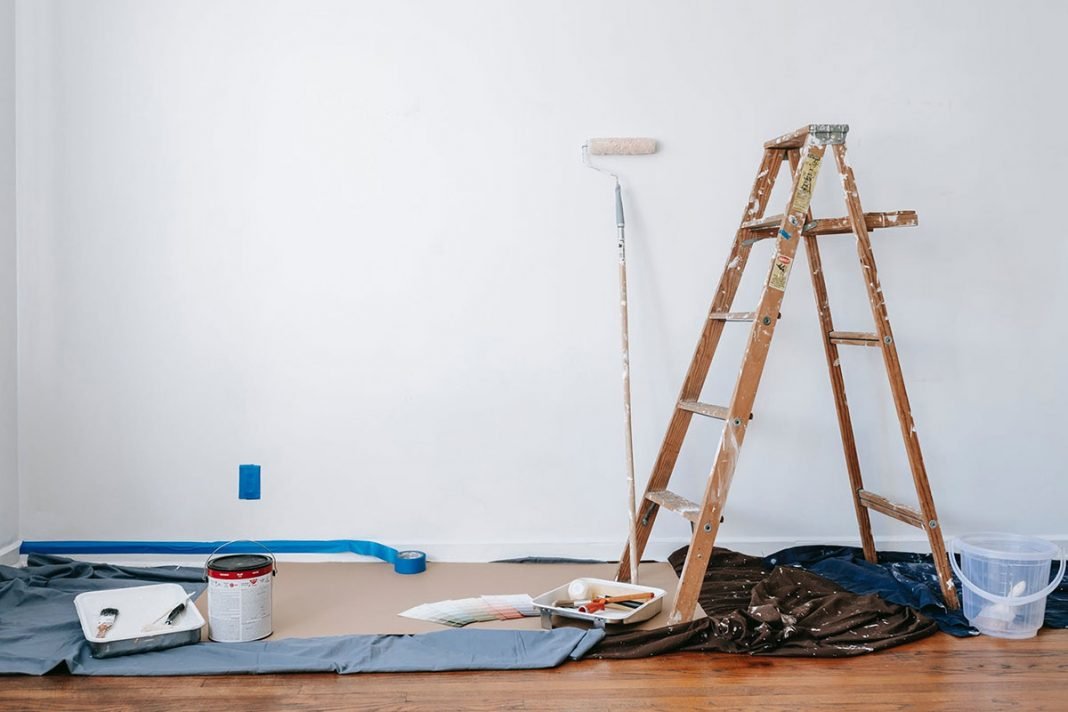We’ve all been spending more time at home recently, and it’s giving us time to DIY our spaces. Sometimes it’s just a new coat of paint or new furniture. Other times, however, it’s more involved, like a bathroom remodel or new kitchen cabinets.
Whatever your room selection or scope of work, do-it-yourself renovations mean there is plenty of work for everyone in the house. It’s time to get the kids involved in the DIY process and get those creative juices flowing.
It may seem a little daunting to invite kids into the DIY experience, but it’s a great opportunity for both parents and kids. There are a number of ways for kids to get their hands dirty. Kids will feel empowered and learn some new skills, and parents will see their kids grow and develop.
Renovations, both DIY and professional, have big impacts all around. Not only can these renovations increase property values, but they can also increase your home replacement cost and change insurance rates or coverage. It’s important to understand the full ramifications of these DIY renovations before jumping in.
What is Home Renovation?
The term home renovation is often used to mean a lot of different things. It’s important to nail down the true definition to better understand what’s involved.
Home renovation can mean anything from a full-blown room makeover to a few tweaks or improvements. In most instances, however, home renovation means to restore something to a good state of repair. Remodeling, on the other hand, means that the structure or form has been changed.
Renovations usually mean a little less headache and a little less financial investment. There are some limits in home renovation. A renovation usually means there are no major structural changes, no walls being removed. These undertakings can still involve a lot of hard work and create stunning areas of your home.
Benefits of DIY Home Renovations
Investing in your home has many advantages. It can be simple like making your work-from-home space more inviting or more complex, like updating your older home on a budget. DIY home renovation’s greatest advantage is a more appealing and attractive home.
And while some people will stay away from anything that starts with the three letters D, I, and Y, there are many benefits of do-it-yourself home renovations.
Save Money
The biggest benefit to DIY home renovations is the cost-saving effects. Because you won’t be paying the overhead associated with a professional or business entity, you can spend more on fixtures and finishes or save it for future projects.
You can save a little bit of headache or compromise as well. Without a contractor, you can also select the products or designs you like best.
Gain Experience
People who choose to DIY their home renovations gain some well-deserved experience. Rather than standing on the sidelines or simply pointing at design choices, DIY experiences allow you to get into the action yourself. You can develop a new set of skills, learn how to use different tools, and expand your problem-solving abilities.
Feeling of Satisfaction
Working on a project from start to finish, especially one that is as involved as home renovation, can be very satisfying. Seeing your hard work and patience pay off in the form of a renovated and personalized home can be its own reward. Plus, you’ll be able to see your handiwork every day when you come home from work.
How to Get Kids Involved
So it’s time to DIY your home renovation. But the kids are running around and things need to get done. Don’t be afraid to hand the kids a paintbrush or a hammer and have everyone roll up their sleeves.
Sometimes it’s a little more work to get kids to join in an experience like home renovation. Fortunately, there are a few tried-and-true ways to get kids involved in home improvement projects.
Young Kids
Any involvement for kids should be based on the child’s age and personal abilities. The younger a child is, the smaller their involvement should be. This shouldn’t stop you or the child from jumping in or feeling like they have a stake in the project.
If this is the first home renovation project, consider starting small until you and the child — and you as the parent — feel more confident. Start with the pre-project cleaning. Depending on the project, the area will need to be clean from dust and debris. Consider asking your young children to pick up small objects, sweep the floor, and dust or wipe down surfaces.
You can also have young children get involved in the planning process. Ask your child to help pick out the paint color for the room or cabinets. Don’t allow full autonomy, but consider offering them a few preselected options.
Home renovation projects can also include new furniture. A lot of times, new furniture requires some assembly. This can be very child friendly as well. Consider asking your child to hand you new pieces or even get a little more hands on.
Older Kids
As a child’s age increases, so should their responsibilities and freedom. Preteens and older teenagers can usually handle larger, more involved parts of a home renovation.
Older kids can learn a lot from using more complex tools. Consider letting older kids participate in smaller repairs, from tightening or replacing loose draw pulls and replacing faucets to hanging new curtains.
Your older kids can be heavily involved in the planning or brainstorming process as well. Depending on the scope of work or specific room being renovated, consider letting your child finish pieces or voice their opinion when discussing the overall design.
For older kids, make sure you plan rewards for completed work. If you’ve completed a small project, consider a sweet treat like ice cream or cupcakes. For the larger projects, you might encourage your older kids with a trip to the movies or amusement park. These rewards will help keep everyone motivated and encouraged.
Projects to Get Kids Involved With

It’s not just about getting a child involved. It’s also important to consider what projects kids are working on. If you’re doing some heavy lifting or retiling a bathroom, then you might want to consider the child’s age. Fortunately, there are age-appropriate home renovation projects available for everyone.
Young Kids
Young kids can work on simple projects like planting a garden, painting a room, or simple woodworking projects. These projects are low commitment, so mistakes can be easily fixed. Plus, they don’t often require large machinery or big power tools. Kids can be involved in these projects from start to finish.
Older Kids
Older kids have more physical and mental abilities than little kiddos. This means the DIY projects older kids work on can be more complex or demanding. Consider asking preteens or teenagers to join you in refinishing cabinets, tiling a bathroom, or complex woodworking projects.
Home Renovation and Insurance
Home renovations involve a lot of hard work, determination, and patience. It can be a long road, but, more often than not, it is well worth the wait. These renovations do, however, have major impacts on your home insurance.
Depending on the scope of work, a home renovation can change the overall cost and coverage of your insurance policy. Adding more square footage or higher-end fixtures also increases the value of a home. Roof damage or repair can vastly increase or decrease your insurance premiums.
A home has three different value numbers: the market value, the actual cash value, and the replacement cost value. The market value is the price someone would pay to purchase the house. The actual cash value is the total cost of all required materials used to build the home.
The replacement cost value, on the other hand, is the cost of both materials and labor needed to rebuild a house from scratch. The replacement cost value can fluctuate depending on the market values of materials and labor. This movement in the market can cause some concern for homeowners as the costs of materials and labor begin to increase. These, and other questions, are important to understand as you begin and complete the renovation process.

Laura Gunn is an insurance expert who writes and researches for the insurance comparison site, TheTruthAboutInsurance.com. She and her husband are avid DIYers who are passionate about others finding their inner do-it-yourself attitude.
Last Updated on 7 months by George Morgan



































